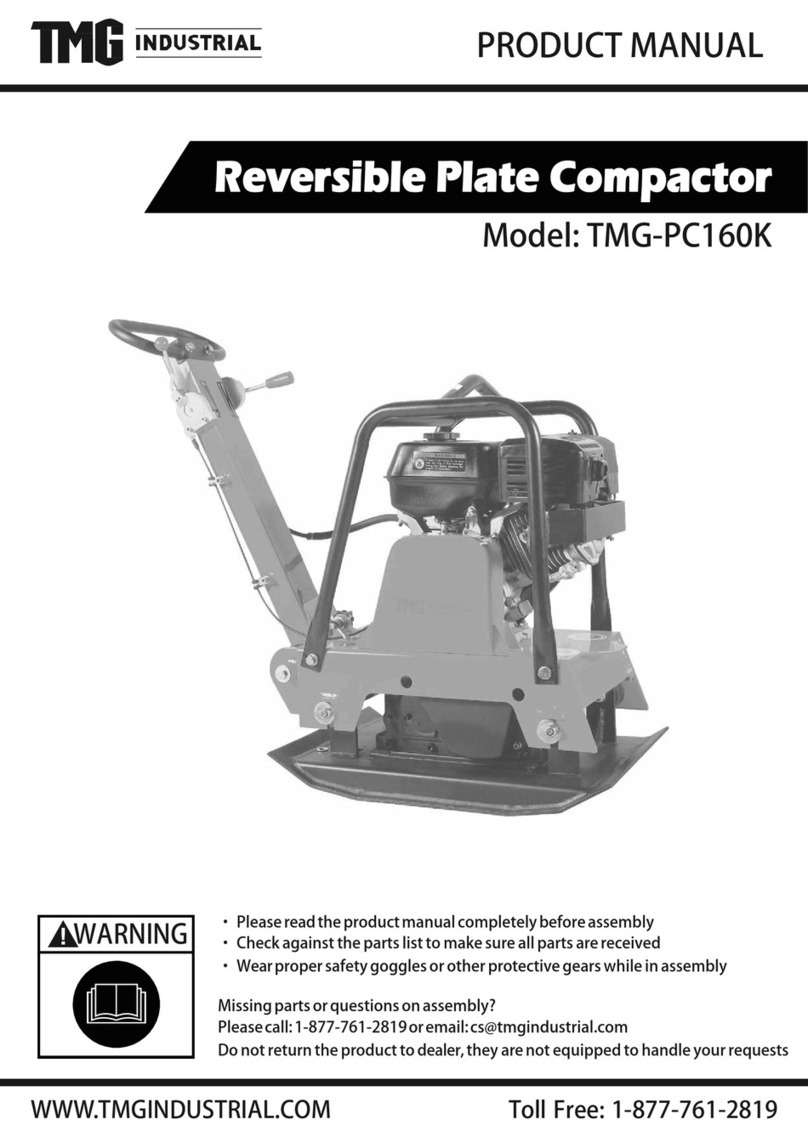
1-002
SAFETY
• The machine is designed specically for the compaction of asphalt or soil road construction
materials. Use of the machine for other purposes such as towing other equipment is
considered contrary to the designated use. The manufacturer cannot be responsible or held
liable for any damage resulting from such use. The risk for such use lies entirely with the
user.
• Operating the machine within the limits of its designated use also involves compliance with
the inspection and maintenance requirements contained in the Operation and Maintenance
Manual.
1-3. Qualications of Operators and Maintenance Personnel
• Work on the machine must be performed by qualied personnel only. Individual
responsibilities of personnel regarding operation, maintenance, repair of the machine must
be clearly stated.
• Dene the operator’s responsibilities; the operator should have authority to refuse
instructions that are contrary to safety.
• Do not allow persons being trained to operate or perform maintenance on the machine
without constant supervision by an experienced person.
• Work on the electrical system of the machine must be done only by an experienced person
or under the guidance of a skilled electrician and according to electrical engineering rules
and regulations.
• Work on the frame, brakes, hydraulic and steering systems must be performed by skilled
personnel with special knowledge and training for such work.
1-4. Safety Practices and Policies
• Keep the manuals in the container provided on the machine. Manuals must always be
available at the site where the machine is being used.
• The operator or user of the machine must be aware of all applicable or legal and mandatory
regulations relevant to accident prevention and environmental protection. These regulations
may also deal with handling of hazardous substances, the required proper personal safety
and protective equipment and trafc or jobsite regulations.
• Machine operating instructions should also be supplemented with detailed instructions
pertaining to the specic jobsite or work location.
• Always be sure the persons working on the machine have read the operating instructions
and all safety precautions before beginning work. Reading safety instructions after work has
already begun is too late.
• Wear close tting garments and always tie back and secure long hair, also avoid wearing
jewelry such as rings. Injury can result from loose clothing, hair or jewelry being caught up
in the machinery or rotating parts.
• Use protective equipment as required by the circumstances or by law.





























